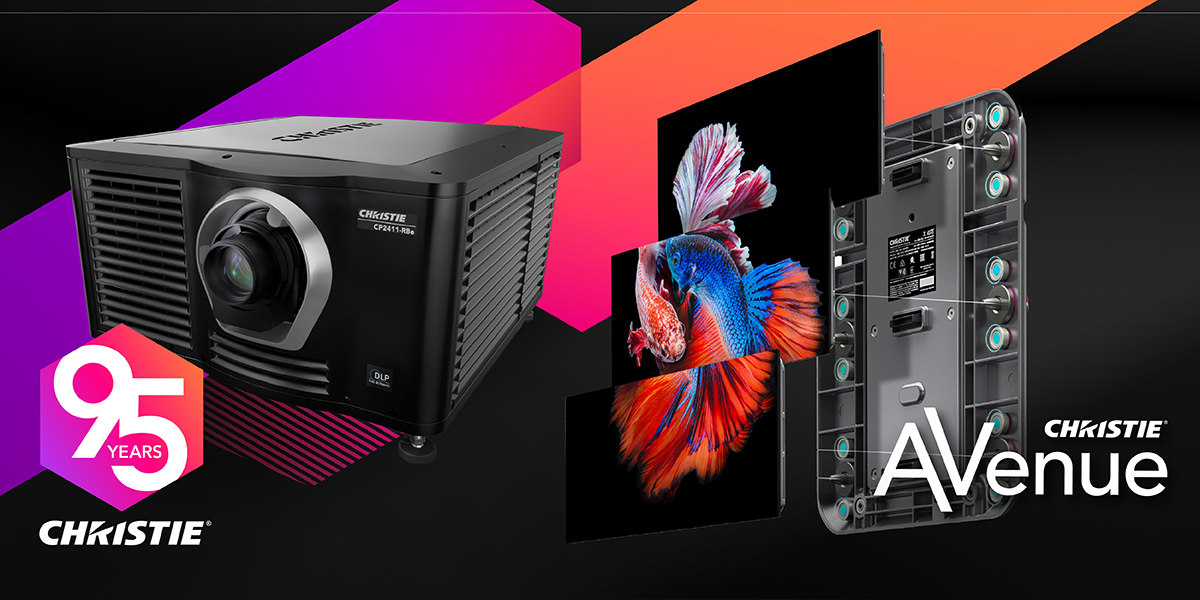Ninety-five years of applied imagination

When a company reaches 95, it’s reasonable to ask: What fires its innovative spark? No rule of business says a creative company will continue to create. There are no guarantees of continued inspiration and success. Simply keeping pace with change isn’t enough. To be truly innovative, you need to be the change by regularly pushing the innovative boundaries and truly leading the industry forward.
Looking for problems
One of the people with a challenging role at Christie is Larry Paul, executive director, technology and custom solutions, enterprise and entertainment. And Larry has no doubt where the prime driver of innovation lies. “I think for the 95 years of our company’s existence, the common thread has been that we look for real problems the industry has — or will have — and try to solve them. Whether it was for the film industry, where we introduced endless loop platter projection systems that made multiplexes an economic reality and won us an Academy Award®, or in the way we’ve championed RGB pure laser, these were responses to customer issues.”
Not that anyone comes to Larry with a firm specification and says, “Build me this.” Requests are usually far more nebulous, and even identifying a solution that shows practical promise is challenging. But as Larry says, this is where 95 years of knowledge and being active across many markets are advantages. “The high frame-rate projection we developed for multiple Academy Award-winning filmmaker Ang Lee was something we’d explored for highly specialized simulation applications — developing the special electronics needed — and we could already see a direct application in theme parks. But when Ang came to us with an artistic vision of a high frame rate movie in 3D, that meant we already had the intellectual components available and knew something was possible.”
Direct requests from film industry royalty though, are rare, and as Bryan Boehme, vice president of global sales, enterprise says, if you want to know what people want, you must get out and listen to the people. “This business is a community, and the most important thing is how we work as a community together, and respect each other, and work closely together.”
Joel St-Denis, director of product management, takes up the story. “Even though we are very much an engineering company, we’ve always been market-driven. We take customers around our trade show stand and show them what we have, and they might ask for something we don’t have. And that’s often more important. It’s how one of the most successful products in the history of Christie came about – the M Series. Talking matters.”
This confidence to take a ‘something’ – no matter how slim the initial details – and invest resources to create a commercial product has always been key to Christie’s success.
So, what of the future? The concept of Eye Limited Resolution (ELR), where the limiting factor is not display technology but the acuity of the human eye, is not new. Yet it’s still a barrier outside of highly specialized situations. ELR promises moving images that are indistinguishable from real-world vision and may be the key to unlocking the power of virtual and enhanced reality. Do Larry, Joel, and Bryan have ELR on Christie’s radar? Most certainly.
Applied imagination
Christie’s enviable list of patents and awards (including three Academy Awards for Scientific and Engineering) is a testament to a philosophy of innovation that continues to work. And it’s probably no coincidence that this discipline of applied imagination is familiar to the artistic communities Christie works with.
It’s how creative industries and individuals constantly innovate and reinvent themselves, first imagining the impossible, then making it a reality.






